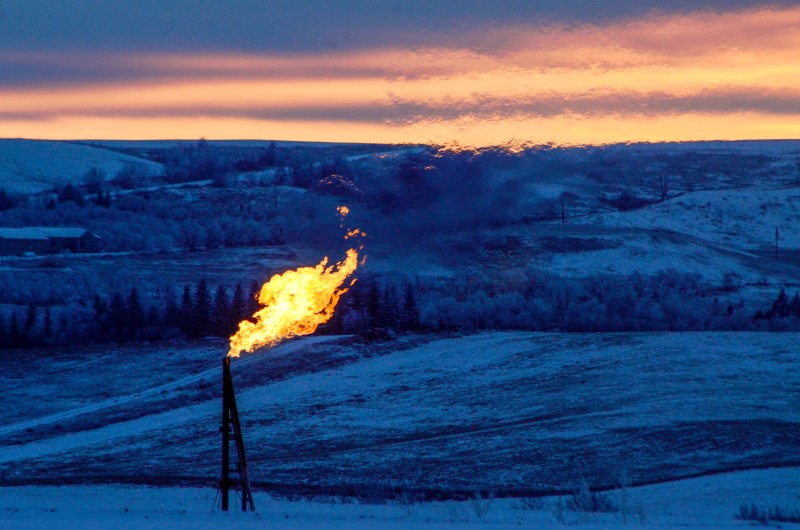By Barani Krishnan
Investing.com -- Natural gas futures fell for a third day in a row on Thursday but the drop of 2% on the day — versus the intraday plunge of almost 8% to new 21-month lows — indicated that the market may be closer to finding a bottom to its worst selloff in years.
The front-month March gas contract on the New York Mercantile Exchange’s Henry Hub settled down 6.7 cents, or 2.3%, at $2.848 per mmBtu, or million metric British thermal units.
The benchmark gas futures contract had earlier plunged to $2.688, its lowest since April 2021.
Overall, gas futures have lost 57% over the past six weeks after an unusually warm start to the 2022/23 winter led to a collapse in demand for the heating fuel. Prior to this week’s plunge to $2 levels, gas hit 14-year highs of $10 per mmBtu in August, and even traded as high as $7 in December.
Thursday’s drop came despite government data showing utilities drew a higher-than-forecast 91 bcf, or billion cubic feet, from the U.S. national gas storage for heating and electricity generation last week.
Analysts tracked by Investing.com had expected the EIA, or Energy Information Administration, to report a draw of 82 bcf for the week ended Jan. 20, identical to the consumption seen in the prior week to Jan. 13.
Tepid heating demand has, however, left more gas in storage than initially thought, EIA data showed. U.S. gas storage stood at 2.729 tcf, or trillion cubic feet at the close of last week, up from the year-ago level of 2.622 tcf.
Notwithstanding the latest slide in gas prices, weather forecasts show a likely return to freezing conditions starting in February.
Texas-based LNG export terminal Freeport is also reported to be readying to resume operations in February. Freeport consumed 2 bcf per day of gas until its sudden closure in June left the market with some 420 bcf of idle supply. Traders are estimating that it could take till late next month for LNG shipments to again leave the terminal.
